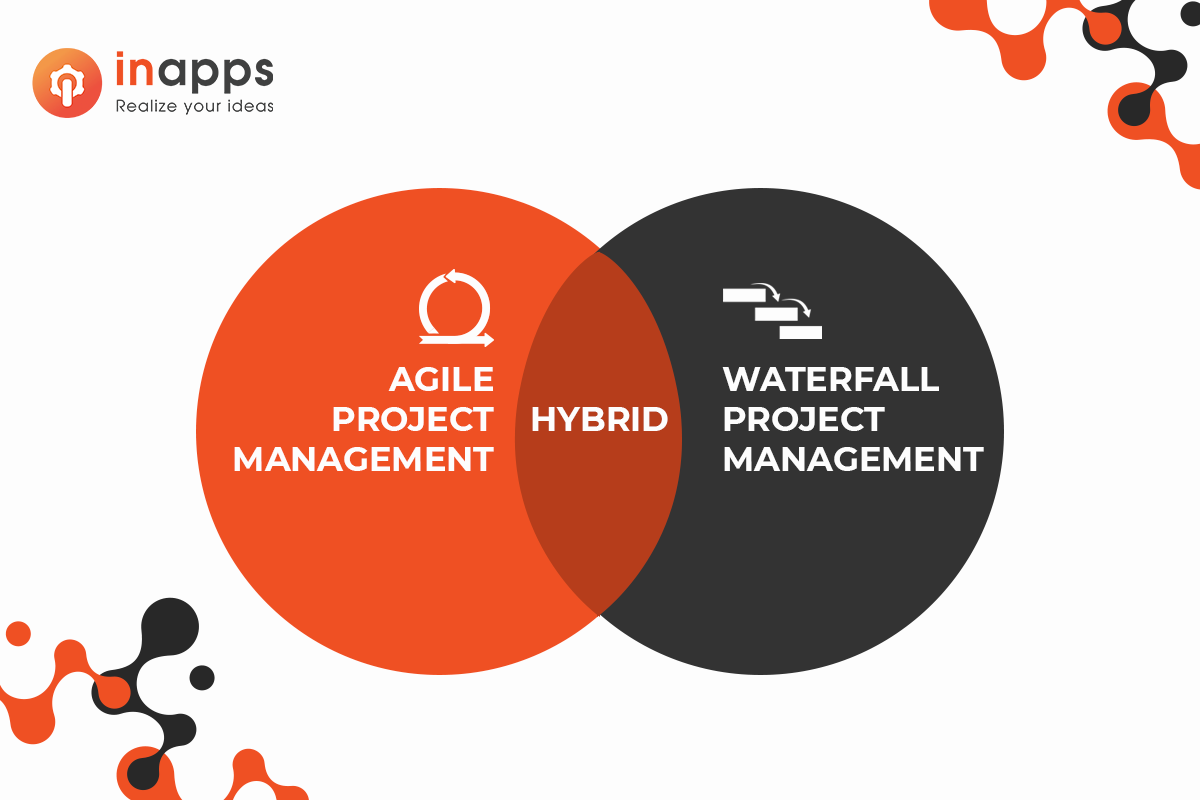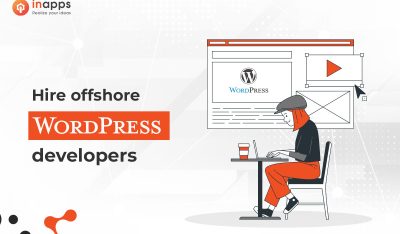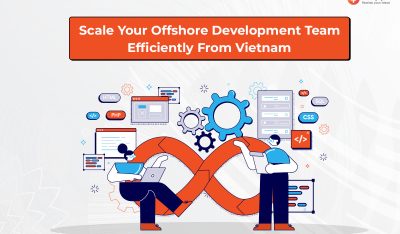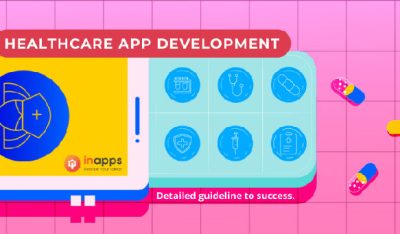- Home
- >
- Offshore News
- >
- Understanding Hybrid Project Management Model
I’m pretty sure that when it comes to project management methodologies, you would immediately think of Agile, Waterfall, or Kanban. These project management methods have made a name for themselves for quite a while. However, each has its unique pros and cons.
Waterfall is structured, but backs flexibility. In an environment characterized by rapid changes, the waterfall has limits that can run the project into hot water. Agile, however, offers high adaptability, suitable for the product development phase, but once it goes to manufacturing that requires structured policies, this starts to show weaknesses.
For many years, too many leaders and project managers thought they had to choose between one or another while they could get the best of both worlds. The idea is to combine the planning rigor of Waterfall with the flexibility of an Agile project. And that is a hybrid project management model.
1. What is a hybrid project management approach?
To put it simply, a hybrid project management methodology is a technique that takes two or more project management methods to create a brand-new method. These project management models include:
- Waterfall methodology
- Agile methodology
- Kanban methodology
- Lean methodology
- Six Sigma methodology
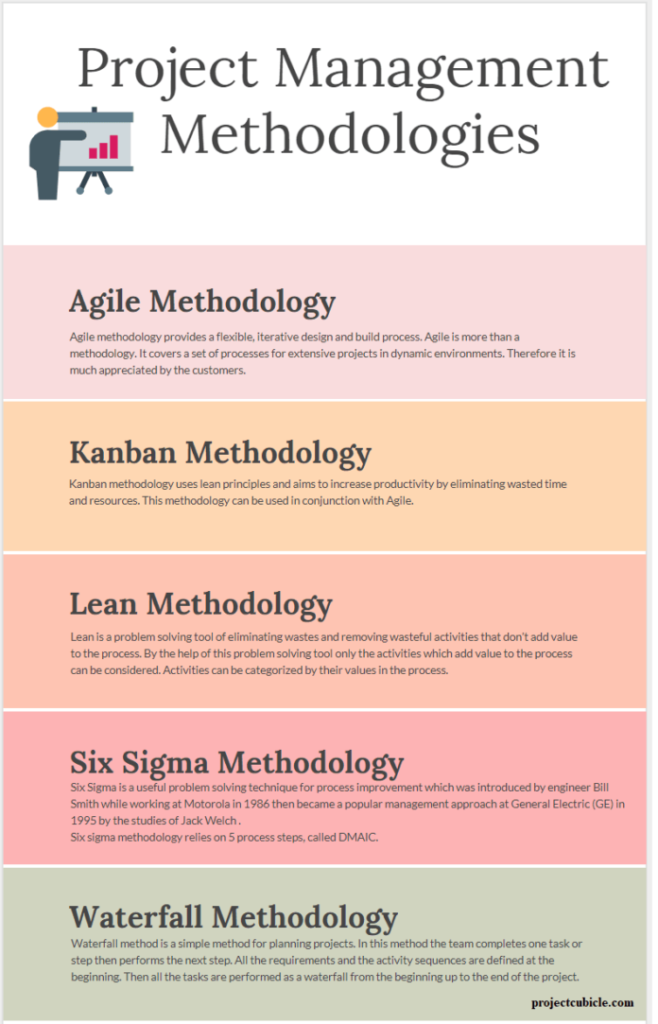
project-management-methodology
Typically, when it comes to a hybrid model, people would instantly think of hybrid agile project management. This combines the flexibility of agile and the more structured approach of waterfall project management methodologies. Therefore, the hybrid model enables project managers to leverage the strengths of their chosen methods, while navigating better in the face of hardships. It can be said that a hybrid is perfect for projects that require both flexible and rigid processes.
2. How to choose between Waterfall agile approach
What are waterfall and agile project management methodologies? Waterfall approaches follow a linear and cascading sequence of phases, where progress flows steadily in one direction, just like a waterfall. Agile, on the other hand, breaks down large jobs into several smaller tasks. With agile, once you complete one task, and get feedback, you can adjust accordingly and improve as you continue. This approach allows frequent involvement from clients and thus produces better process output.

waterfall project management. Image source. Project management institute

Agile project management. Image source. PMI
In order to choose between agile and waterfall team management models, you must understand the pros and cons of each method. Here’s a table highlighting the key differences between agile and waterfall:
Waterfall | Agile | |
| Pros | Offer a well-defined sequence of activities with clear checkpoints at the end of each phase Pinpoint milestones and deliverables in the development mode Better controls at the end of each phase | Frequent involvement of clients results in better subject matter expertise Real-time feedback allows for better process output Tests are performed after each phase, ensuring fewer defects |
| Cons | End-users can only give feedback at the beginning and end of the lifecycle Difficult to adapt to changing requirements from clients Little flexibility for resource management. Each phase requires a huge number of specialists | The undefined timeline may cause some delay Higher project expenses for the customer as time is prolonged and some deliverables aren’t delivered on time Highly committed team members required |
Now, go back to the question at the beginning. How to choose between agile and waterfall project management? The answer is it depends. But on what factors? Let’s review these cases.
In 2015, Cerner, a healthcare technology company began a project called Cerner VA EHR project to develop a new system for the U.S. Department of Veterans Affairs. The project using the Waterfall model was expected to cost $16 billion and take 10 years to complete. The project quickly ran into problems as the VA’s requirements for the new EHR system lacked clarity at first, and the Waterfall model made it difficult for Cerner to change course. By 2018, the project’s cost had increased to over $20 billion and was still far behind schedule. This forces the VA to terminate the project. This is one specific example to show that a waterfall alone can be a no-go.
Alright, let’s hear another one. The UK’s Universal Credit welfare reform project, had an initial budget of £2.2 billion, using Agile methodology. However, due to Agile’s difficulty in estimating delivery times and costs, the project ended up costing over £12 billion, and it’s still years behind schedule after nearly a decade.
From these examples, it can be seen that agile is best for projects with undefined requirements firsthand, as well as more room for change. Waterfall, however, offers a more traditional and sequential approach with distinct phases. So when to use hybrid project management? For a project that requires both flexibility and a structured approach, it is best to blend the strengths of Agile and Waterfall. This is the reason why a hybrid project management model becomes irresistible.
3. Combine Agile and Waterfall into a Hybrid Project Management Model
Before discovering the actual hybrid project management methods, it is important to understand the right way to merge two methodologies. Let’s examine the case of traditional waterfall and agile hybrid methodology.
3.1 Assess project requirements
The first step in combining Agile and Waterfall into a Hybrid Project Management Model is to assess project requirements. These include stakeholder expectations, project objectives, budget, regulatory requirements, team resources, and any dependencies. This will help you make the right decisions for the next step.
3.2 Split the project into distinct phases
The software development lifecycle typically consists of six standard phases: planning, designing, development, testing, deployment, and maintenance.
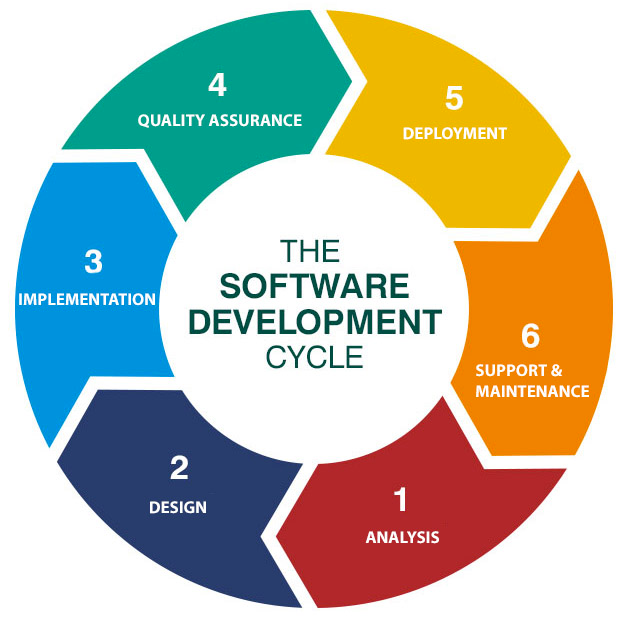
Software development lifecycle
During planning, project goals and scope are defined, which is followed by analysis to gather detailed requirements. Designing is next, setting the blueprint. Meanwhile, the development phase involves coding. Testing ensures quality, and deployment makes the software available for use. In short, these phases provide a structured path to develop effective software, but Agile methodologies may adapt and iterate within these phases for greater flexibility.
3.3 Waterfall for planning
After analyzing different phases, it’s time to decide which phases of your project should follow Agile and which should follow Waterfall.
According to the Project Management Institute, initial project definitions should use waterfall methodology as this offers ample opportunities to document thoroughly and define what would be the final product. A clear definition of roles and a structured approach to developing first project deliverables are critical to project success. Otherwise, the project will be likely to suffer from scope creep and unwanted delays.
3.4 Agile for the development phase
Applying agile into the development phase is highly recommended, as the implementation process will be subject to a lot of unexpected changes from both stakeholders (or owners) and agile teams. Product owners usually don’t know everything they want beforehand and agile teams cannot always accomplish all deliveries as planned. Flexibility should go both ways and managing projects using agile makes things easier than traditional waterfall.
3.5 Integration between Agile and Waterfall
The waterfall is more focused on activity completion rather than delivery of product quality. As a consequence, this traditional approach fails to produce high-value products for users, says Mike Cohn in his book Agile Estimating and Planning. In today’s constantly changing climate, flexibility is very much required as it allows room for teams and stakeholders to adjust the plan to new market requirements or updates.
In that situation, integrating agile and waterfall is necessary for project success. Depending on each project, you can combine agile and waterfall accordingly. For example, DBS Bank effectively carried out a meticulously planned infrastructure overhaul and adopted iterative development for its customer-facing digital services. This strategic approach enabled them to modernize their existing systems and simultaneously introduce groundbreaking services to the market. As a result, their revenues skyrocketed from S$9.6 billion in 2014, the year they embarked on their digital transformation journey, to an impressive S$14.6 billion in 2020.
3.6 Reevaluate and adjust frequently
There’s no such thing as a perfect project management model for you. Be ready to accept new ideas, and adjust things accordingly, especially when the old ways are proving ineffective. Make sure you host meetings with your teams to discuss what works, and what you can do better next time. With that information in mind, implement it for future projects. Also, don’t forget to ensure consistent and effective communication between team members and stakeholders during those meetings.
4. Hybrid project management examples
I mentioned a few examples of projects using a hybrid project management approach above, and here are a few more case studies.
The first Hybrid project management example is when Philips adopted Agile and waterfall for its HealthSuite digital platform. This allowed Philips to deliver rapid releases for software development, while still complying with strict documentation and safety regulations. As a result, the product quality was enhanced. The time required to bring the product to market was reduced. Costs became more predictable, and significant savings were achieved.
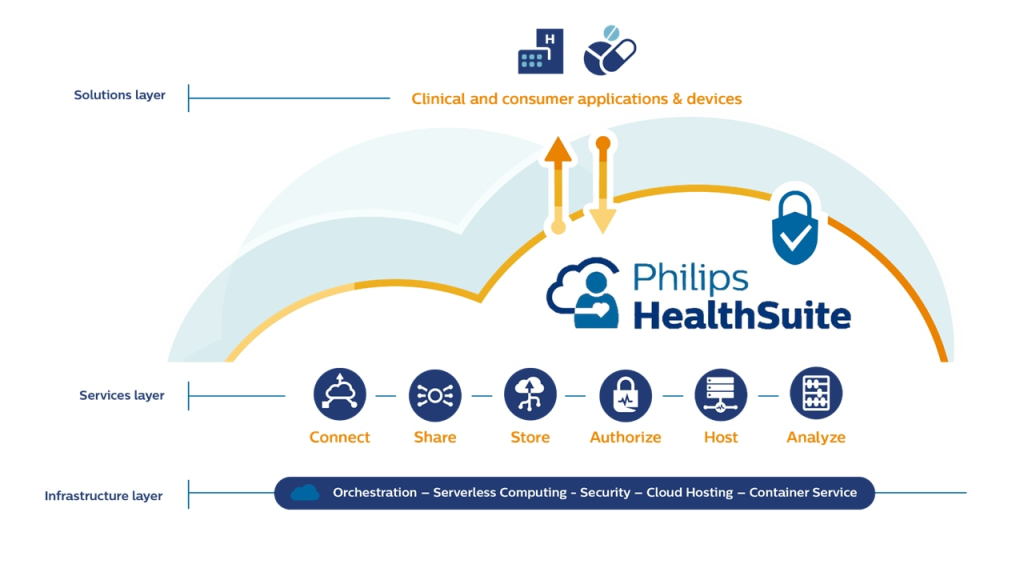
HealthSuite digital platform. Source: Philips
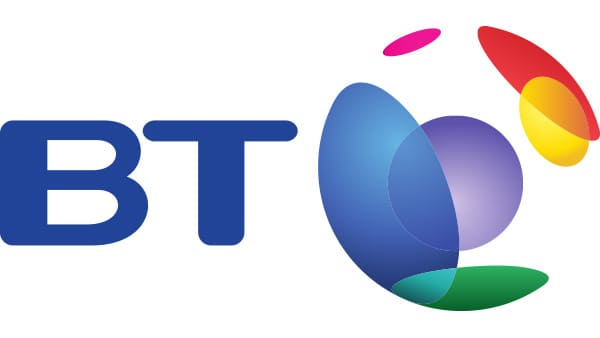
Hybrid Project Management British Telecom (BT)
5. Benefits of hybrid project management
Implementing hybrid project management gives you the best of both worlds. Here are some key advantages of using hybrid project management.
Adaptability
Hybrid project management allows you to select the most suitable methodology for each phase of your project. For instance, consider developing a mobile app. The initial phase, which involves gathering requirements from stakeholders, could use Waterfall as a structured approach. Once you have a clear set of requirements, you can switch to Agile for the development phase to adapt to changing user preferences and market dynamics.
Control on what needs to be controlled
By integrating Waterfall and Agile, you maintain control over project planning, milestones, and budgets. For a construction project, you might use Waterfall for the architectural and design phases, ensuring that structural aspects are well-defined and compliant with building codes. Then, in the construction phase, you could switch to Agile for daily site management, where daily updates and adaptations are essential.
Customer Involvement
Hybrid approaches encourage early and regular customer involvement. Imagine a software development project for a new e-commerce website. During the initial Waterfall phase, customers’ core requirements and design preferences are gathered, ensuring their expectations are met. Once the website is live, Agile techniques enable ongoing improvements based on customer feedback, leading to higher customer satisfaction.
Risk reduction
For a healthcare IT project like implementing an electronic health records system, the planning phase might use Waterfall to meet regulatory requirements. If emerging healthcare standards or technologies require adjustments, Agile can swiftly accommodate changes while maintaining compliance. This helps identify unwanted risks from early stages, and thus, mitigate risks in the long run.
Predictability
Hybrid project management provides predictability in planning and execution. In a manufacturing project, you could use Waterfall for the production line design and setup, ensuring a structured and predictable manufacturing process. Then, during the production phase, Agile can be employed to quickly adapt to production issues or customer demand changes while still delivering consistent quality.
6. Hybrid work breakdown structure
Creating a hybrid work breakdown structure (WBS) involves breaking down a project into smaller, manageable tasks and components using a combination of Waterfall and Agile methodologies. Here’s an example of a hybrid WBS:
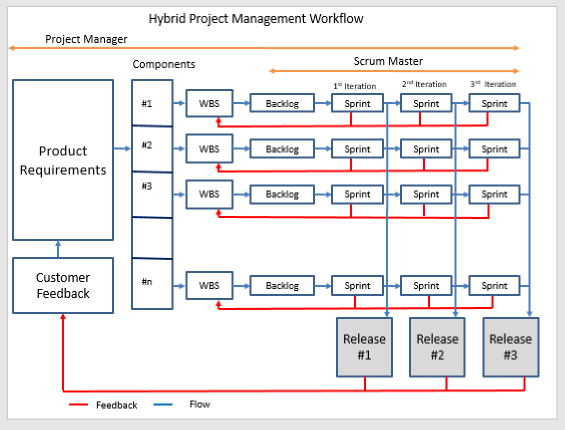
hybrid work breakdown structure. Image source: Binfire
All in all, hybrid project management is all about combining methods that are designed suitably for each phase. It depends on each process that you’re gonna decide which is for which. Keep in mind the very core features of each methodology to shield you from future headaches.
I hope this article answers your questions about the hybrid project management model. In case you want to hire an offshore development center or dedicated IT team, contact us. If you’re still unsure about which project management methodology is for you, schedule a meeting with InApps Team, and we’ll untangle this for you. So, let’s connect!
Let’s create the next big thing together!
Coming together is a beginning. Keeping together is progress. Working together is success.




